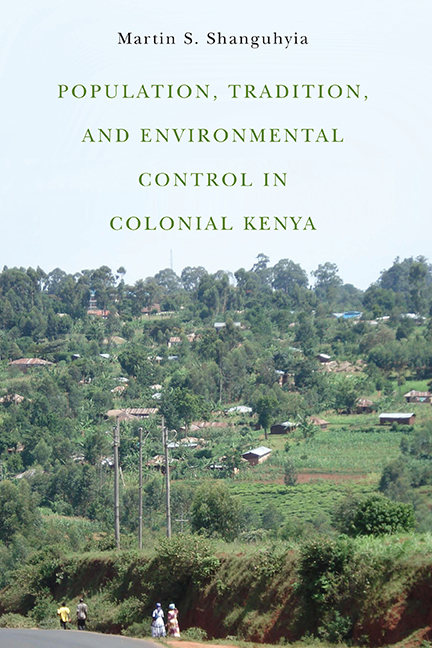Book contents
- Frontmatter
- Contents
- List of Illustrations
- Preface
- Abbreviations
- Introduction
- 1 Administrative and Demographic Changes: Implications on Land Relations, 1900–1930
- 2 Maize and Economic Prosperity, 1920–38
- 3 Internationalizing Degradation Narratives in Kenya, 1930–38
- 4 Prewar Soil Conservation Initiatives and Local Responses, 1934–38
- 5 Wartime Production in a Besieged Environment, 1939–45
- 6 Postwar Development and the Dilemma of “Reviving” African Traditions, 1945–63
- 7 Regional Migration and Failed Agricultural Intensification, 1940–66
- Conclusion
- Notes
- Bibliography
- Index
6 - Postwar Development and the Dilemma of “Reviving” African Traditions, 1945–63
Published online by Cambridge University Press: 09 June 2021
- Frontmatter
- Contents
- List of Illustrations
- Preface
- Abbreviations
- Introduction
- 1 Administrative and Demographic Changes: Implications on Land Relations, 1900–1930
- 2 Maize and Economic Prosperity, 1920–38
- 3 Internationalizing Degradation Narratives in Kenya, 1930–38
- 4 Prewar Soil Conservation Initiatives and Local Responses, 1934–38
- 5 Wartime Production in a Besieged Environment, 1939–45
- 6 Postwar Development and the Dilemma of “Reviving” African Traditions, 1945–63
- 7 Regional Migration and Failed Agricultural Intensification, 1940–66
- Conclusion
- Notes
- Bibliography
- Index
Summary
Introduction
Colonial land management policies in Vihiga that attended the postwar period can hardly be delinked from broader postwar reconstruction policies then in effect throughout the British Empire. A main aspect of those policies was a demand for a tightening of links between London and the colonies, part of a deliberate effort to use the colonies to meet Britain's economic recovery. This, however, did not imply abandoning the colonies to the perils of postwar recovery; rather, that recovery was to be achieved through economic developments in Britain and its territories in ways that complemented each other. The 1940 Colonial Development and Welfare Act and its postwar amendments provided the structural means for channeling metropolitan financial investments in the colonies to stimulate the production of primary products for Britain.
It was also perceived in London that if this investment succeeded, it could shift the dependence of the colonies on imports from Western countries to a sustained flow of goods and capital between them and Britain. Dubbed “developmental colonialism,” this postwar development policy incorporated a wide range of objectives beyond the economic component to include reimagining African society and culture. This in turn implied a focus on the broader aspects of African rural life by governments in most colonies in Africa, such that agricultural development provided the drive for action. Its multifaceted nature demanded the multiplication of government colonial departments and manpower, which was also the primary means of implementing the new development initiatives in African rural areas, thereby increasing the degree of presence of the colonial state in those areas. D. A. Low and John Lonsdale have aptly described this intrusive process of the colonial state in rural Africa after the war as the “second colonial occupation.” In Kenya, as for the rest of British Africa, this had the effect of creating what David Anderson describes as a “shift toward a more centrally- planned and coordinated program of development” that guided British postwar colonial policy.
- Type
- Chapter
- Information
- Publisher: Boydell & BrewerPrint publication year: 2015



